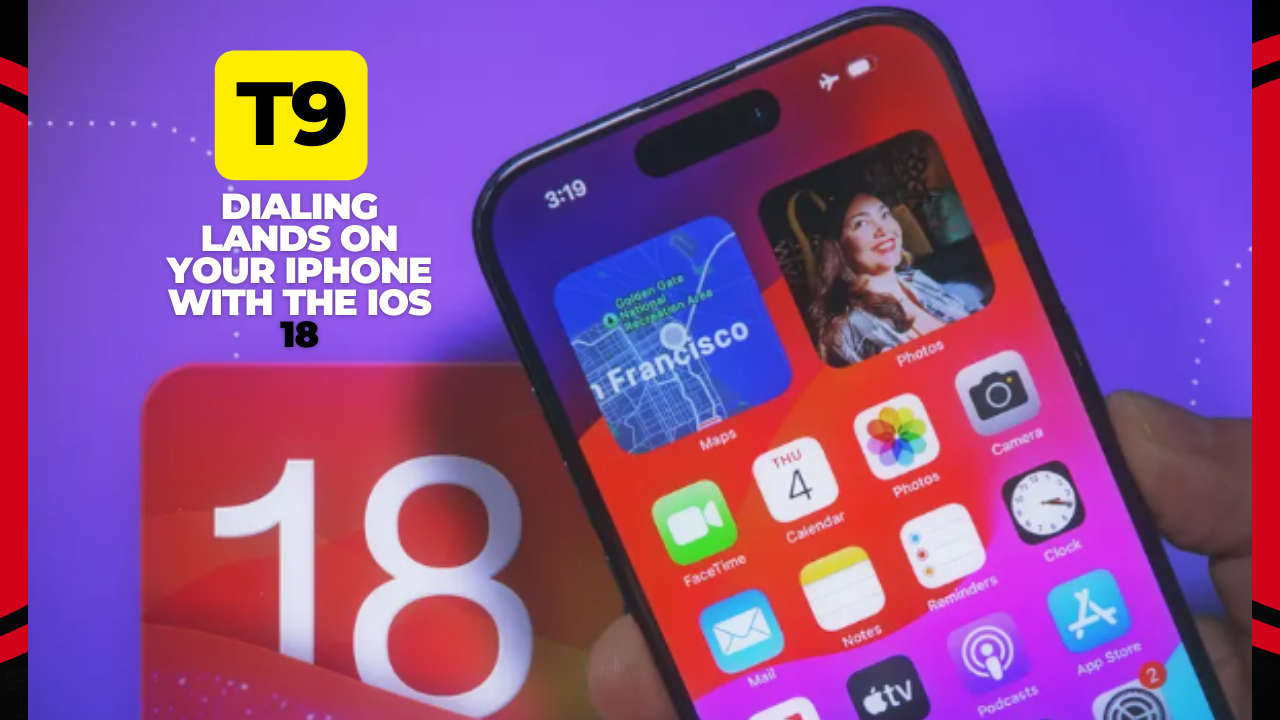**T9 Dialing Lands on Your iPhone With the iOS 18 Betas**
The iOS ecosystem is ever-evolving, and Apple’s latest iOS 18 beta introduces a feature that evokes nostalgia while blending seamlessly with modern-day usability: T9 dialing. This addition is a nod to the days when phones were simpler, and texting on a numeric keypad was a skill honed by many. Here’s an in-depth look at what T9 dialing is, why Apple decided to bring it back, and how it’s expected to impact iPhone users.
What is T9 Dialing?
T9, or Text on 9 keys, was a predictive text technology that revolutionized mobile phone use in the late 1990s and early 2000s. It allowed users to press a single key multiple times to cycle through letters, but instead of having to guess which letter was correct, the system used a predictive algorithm to determine the most likely word based on the keys pressed. For example, pressing the “5” key once could represent J, K, or L, but the system would predict the most likely word based on the context of the surrounding letters. This technology was especially popular on feature phones before the advent of full QWERTY keyboards and touchscreens.
Why is Apple Reviving T9 Dialing?
Apple’s decision to reintroduce T9 dialing in iOS 18 comes as a surprise to many, but it’s part of a broader trend where technology companies are tapping into nostalgia to create products that resonate with users. The resurgence of retro tech—like vinyl records, instant cameras, and even classic video games—has shown that there’s a market for products that evoke memories while offering modern functionality.
For Apple, the introduction of T9 dialing isn’t just about nostalgia. It’s also about accessibility and convenience. While smartphones have become ubiquitous, not everyone is comfortable with touchscreens, especially those who grew up using feature phones. For older users or those with certain disabilities, T9 offers an alternative method of input that may be easier and more intuitive than a touchscreen keyboard. Additionally, for users who find themselves in situations where one-handed typing is necessary, T9 dialing can be more efficient.
How T9 Dialing Works on iOS 18
Incorporating T9 dialing into the iPhone required careful thought and design, given that the iOS interface is vastly different from the feature phones of yesteryears. On iPhones running iOS 18, T9 dialing can be activated in the keyboard settings. Once enabled, the numeric keypad replaces the standard QWERTY keyboard in certain applications, such as messaging, phone dialing, and search.
When using T9 dialing on the iPhone, users press the numeric keys corresponding to the letters they want to input. The predictive text algorithm, now enhanced with machine learning, offers word suggestions as the user types, similar to the predictive text found on modern QWERTY keyboards. This allows for quick and efficient typing, with the added benefit of being able to use the keyboard one-handed, a feature that is particularly useful on larger iPhone models.
Apple has also introduced new customization options for T9 dialing. Users can now adjust the sensitivity of the predictive text algorithm, choose from different T9 layouts (including international variants), and even select a “classic” mode that mimics the experience of old Nokia and Motorola phones, complete with haptic feedback that simulates the tactile feel of physical buttons.
User Reception and Impact
The initial response to T9 dialing in the iOS 18 beta has been mixed but largely positive. Many older users, who remember the days of T9 texting fondly, are excited to see its return, while younger users are curious to try out a feature they may have only heard about from older siblings or parents. Social media has been abuzz with users sharing their experiences with T9 dialing, with some joking that it’s time to brush up on their “old school” texting skills.
From an accessibility standpoint, T9 dialing has been lauded as a welcome addition. For users with visual impairments or dexterity challenges, the large buttons and predictive text make it easier to compose messages without relying on autocorrect or struggling with tiny on-screen keys. Apple’s commitment to accessibility continues to be a strong point, and the reintroduction of T9 dialing is another example of the company’s efforts to cater to diverse user needs.
However, there are some who question the necessity of T9 dialing in an era dominated by touchscreens and voice input. Critics argue that while it may be a fun novelty, it’s unlikely to see widespread adoption outside of niche groups. Some also express concerns about the learning curve for younger users who have never encountered T9 before and may find it cumbersome compared to the standard QWERTY keyboard.
Conclusion
T9 dialing on iPhones is an intriguing blend of the old and the new, bringing a retro feature into a modern context. Whether you see it as a nostalgic throwback, a useful accessibility tool, or just a fun experiment, its inclusion in iOS 18 is a testament to Apple’s ability to innovate while respecting the past. As the beta testing continues and more users get their hands on the feature, it will be interesting to see how T9 dialing fits into the broader iOS ecosystem and whether it becomes a staple or a passing trend. Regardless, for those who once mastered the art of texting with nine keys, it’s a welcome return of a familiar friend.

